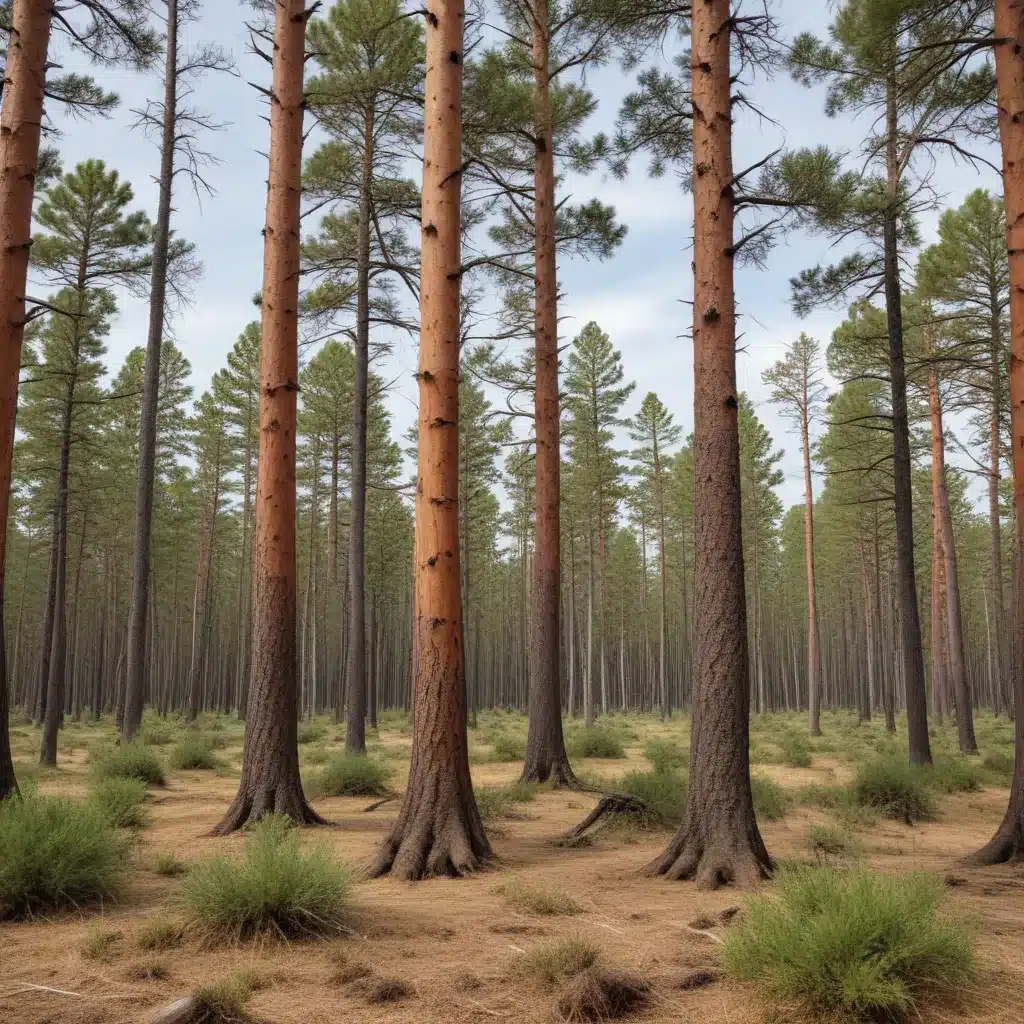
Crooked Pines Farm sits nestled between rolling hills and lush river valleys, its diverse habitats teeming with an abundance of native plant and animal life. From the towering longleaf pines and fragrant sweet gum trees in the uplands to the serene bald cypress swamps and meandering creeks below, this working farm serves as a living laboratory for exploring the wonders of the local ecosystem.
Ecosystem Characteristics
Topography and Geology
Crooked Pines Farm is situated in the heart of the Piedmont region, a landscape sculpted by ancient mountain-building processes and the relentless erosion of waterways over millions of years. The property’s undulating terrain features a mix of rolling hills, steep-sided ravines, and broad, flat floodplains – each contributing to the diversity of habitats found here.
The underlying geology is dominated by metamorphic and igneous rocks such as granite, gneiss, and schist, which weather to form the region’s characteristic red clay soils. In the lowlands, alluvial deposits of sand, silt, and gravel line the streambeds, creating the moist, nutrient-rich conditions preferred by many plant and animal species.
Climatic Conditions
Crooked Pines enjoys a temperate, humid climate typical of the Southeast, with hot, humid summers and mild, wet winters. The farm’s position in the Piedmont means it experiences more pronounced seasonal changes compared to the nearby Coastal Plain. Sudden temperature fluctuations, periodic drought, and occasional ice storms all influence the adaptations of the local flora and fauna.
Vegetation Composition
The mosaic of habitats at Crooked Pines supports a rich plant community dominated by mixed oak-pine forests, wetland ecosystems, and open meadows. In the uplands, towering white oak, southern red oak, and loblolly pine canopies provide shade for an understory of flowering trees like flowering dogwood, redbud, and sourwood. Winding through the lowlands, bald cypress and river birch line the banks of streams and wetlands, their roots stabilizing the soil and creating vital habitat for aquatic organisms.
Rare and Unique Species
Flora
Crooked Pines is home to several plant species of conservation concern, including the state-endangered Georgia oak and the federally threatened Canby’s dropwort. The property also harbors diverse populations of native wildflowers, ferns, and grasses that are important components of the region’s natural heritage.
Fauna
The farm’s diverse habitats support a wide array of wildlife. Charismatic species like the bald eagle, river otter, and white-tailed deer roam the landscape, while lesser-known residents such as the Preble’s meadow jumping mouse and the Hine’s emerald dragonfly thrive in more specialized niches. Crooked Pines is particularly notable for its robust populations of pollinators, including numerous species of butterflies, moths, and native bees.
Endangered or Threatened Species
Crooked Pines plays a vital role in the conservation of several federally listed endangered and threatened species. The Canby’s dropwort, a rare wetland plant, finds refuge in the farm’s seasonal depressions and seeps. The red-cockaded woodpecker, an iconic bird of the Southeast’s longleaf pine forests, has also been observed on the property, a testament to the success of ongoing habitat restoration efforts.
Conservation Efforts
Habitat Protection
The Nature Conservancy, in partnership with Crooked Pines Farm, has worked tirelessly to preserve the property’s diverse habitats. By acquiring strategic parcels of land and securing conservation easements, they have protected hundreds of acres of old-growth forests, wetlands, and meadows – ensuring that these vital ecosystems remain intact for generations to come.
Restoration Initiatives
Ongoing restoration projects at Crooked Pines focus on enhancing the health and resilience of the farm’s natural communities. This includes the reintroduction of fire to fire-dependent ecosystems, the removal of invasive species, and the reforestation of degraded areas with native tree and plant species. These efforts not only benefit rare and threatened species but also improve the overall ecological function of the landscape.
Community Engagement
Crooked Pines Farm is deeply committed to engaging the local community in its conservation work. Through educational programs, guided nature walks, and volunteer opportunities, the farm invites visitors to immerse themselves in the wonders of the Piedmont ecosystem. By fostering a sense of stewardship and wonder, Crooked Pines hopes to inspire the next generation of environmental advocates.
Ecological Significance
Importance for Ecosystem Services
The diverse habitats of Crooked Pines Farm provide a wealth of ecosystem services that benefit both the local community and the broader region. The farm’s forests, wetlands, and meadows play a crucial role in regulating water quality, mitigating flood risk, and sequestering atmospheric carbon. Additionally, these natural areas serve as vital reservoirs of biodiversity, supporting a rich tapestry of life that underpins the overall health and resilience of the local ecosystem.
Role in Regional Biodiversity
As part of the larger Piedmont landscape, Crooked Pines Farm serves as a critical hub for regional biodiversity. The property’s high-quality habitats act as refugia for many plant and animal species, providing connectivity and corridors that allow wildlife to move and thrive across the broader landscape. By preserving and restoring these natural areas, Crooked Pines contributes to the long-term conservation of the region’s natural heritage.
Scientific Research Opportunities
With its diverse array of habitats and species, Crooked Pines Farm offers a wealth of opportunities for scientific research and environmental education. Ongoing studies on the farm range from wildlife monitoring and plant community dynamics to investigations of soil health and ecosystem processes. By collaborating with universities, government agencies, and other research institutions, the farm’s stewards hope to advance our understanding of the Piedmont ecosystem and inform evidence-based conservation strategies.
As you explore the trails and hidden corners of Crooked Pines Farm, you’ll be struck by the sheer abundance and diversity of life that thrives within its boundaries. From the towering longleaf pines to the elusive Hine’s emerald dragonfly, each species plays a vital role in maintaining the delicate balance of this unique ecosystem. By protecting and restoring these habitats, the caretakers of Crooked Pines are ensuring that this oasis of biodiversity will continue to enrich and inspire visitors for generations to come.


